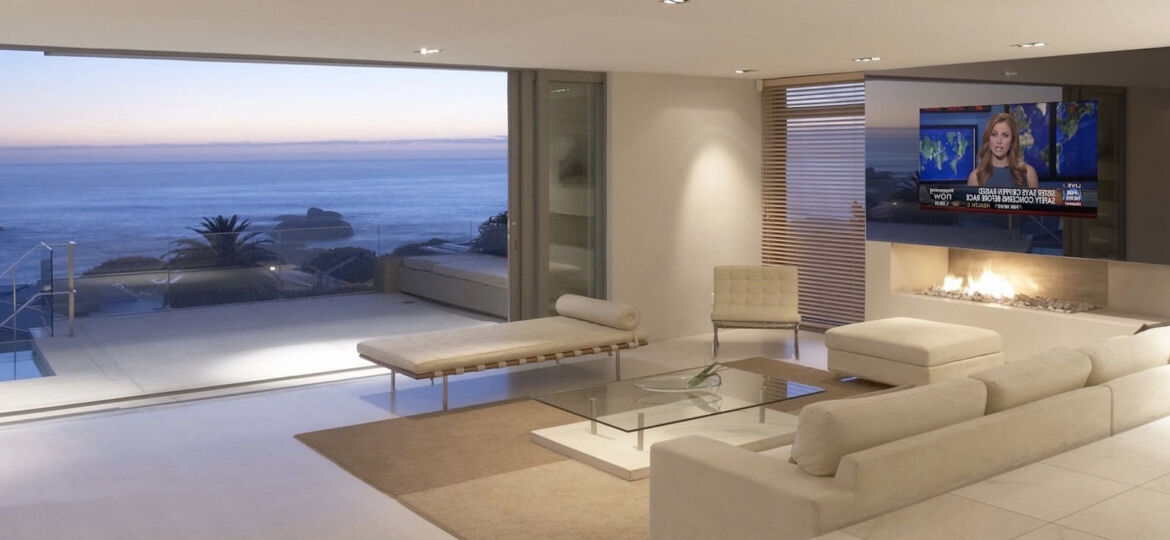
WHY THIS MATTERS IN BRIEF
Invisible TV’s and electronics have been touted for years but now Panasonic have cracked it.
Since the arrival of flatscreen TVs back in the early 2000’s there’s not been a whole lot to get excited about in the world of televisions – after all, how many different ways can you improve what is ostensibly a slab of glass? First there was HD, then 3D – which flopped, then 4k and more recently 8k and smart TV’s. Well, how about by making it almost invisible when you’re not using it? And what if the new technology didn’t just serve as a TV but could form one of the technological foundations of your new Connected Home? Or could replace the glass in your windows and scroll mood enhancing landscapes on demand – and much much more?
That’s the thinking – some of it at least, with the latter being mine – behind a new prototype from Panasonic that’s just been shown off at the CEATEC electronics expo in Japan this week. When switched on, it’s just like a normal TV. When switched off it’s as transparent as glass, meaning you can see the wall or shelving behind and while that’s useful in itself – especially in smaller apartments it also means that the technology could have broader applications in the Connected Home and Internet of Everything arenas, acting as a central hub to control anything from an entire home to helping users run an entire office, and beyond.
Panasonic describes it as the “future of display screens” even though, as you might expect the company’s staying tight lipped about the technology behind its transparent TV – just in case its competitors have something similar in mind but what we do know so far is that it is a glass panel embedded with a fine mesh. You can slide the panel around too – at least in Panasonic’s demo clip, where the TV performs double duty glass pane of a cabinet.
Because it can be moved around, you can easily get at shelves behind it, or adjust the height of the display depending on who’s watching and importantly, the screen uses the latest Organic Light Emitting Diode (OLED) technology, where each pixel lights itself – rather than being lit from behind.
Traditionally, OLED panels put a thin layer of plastic between two electrodes on top of a glass slab. Because of this, when the electric signal disappears, the slab can look virtually transparent.
OLED technology requires very little power too, which is why panels like this can be so thin and eventually, tech firms, such as LG, are hoping to develop flexible OLED screens that you can bend or even roll away.
And this isn’t just for your favourite crime drama or soap opera either – Panasonic’s marketing spiel envisions people using the display to control smart home devices, play music, or maybe even set the mood with a series of themed images.
Panasonic originally showed off the technology at CES in Las Vegas earlier in the year, but the company’s engineers say the latest version of their invisible television looks even more transparent when switched off, and brighter when switched on.
Unfortunately, despite the progress they’re making, it looks like it won’t be ready to buy for another three years or so, according to company representatives but at least that will give you plenty of time to save up for one.
















